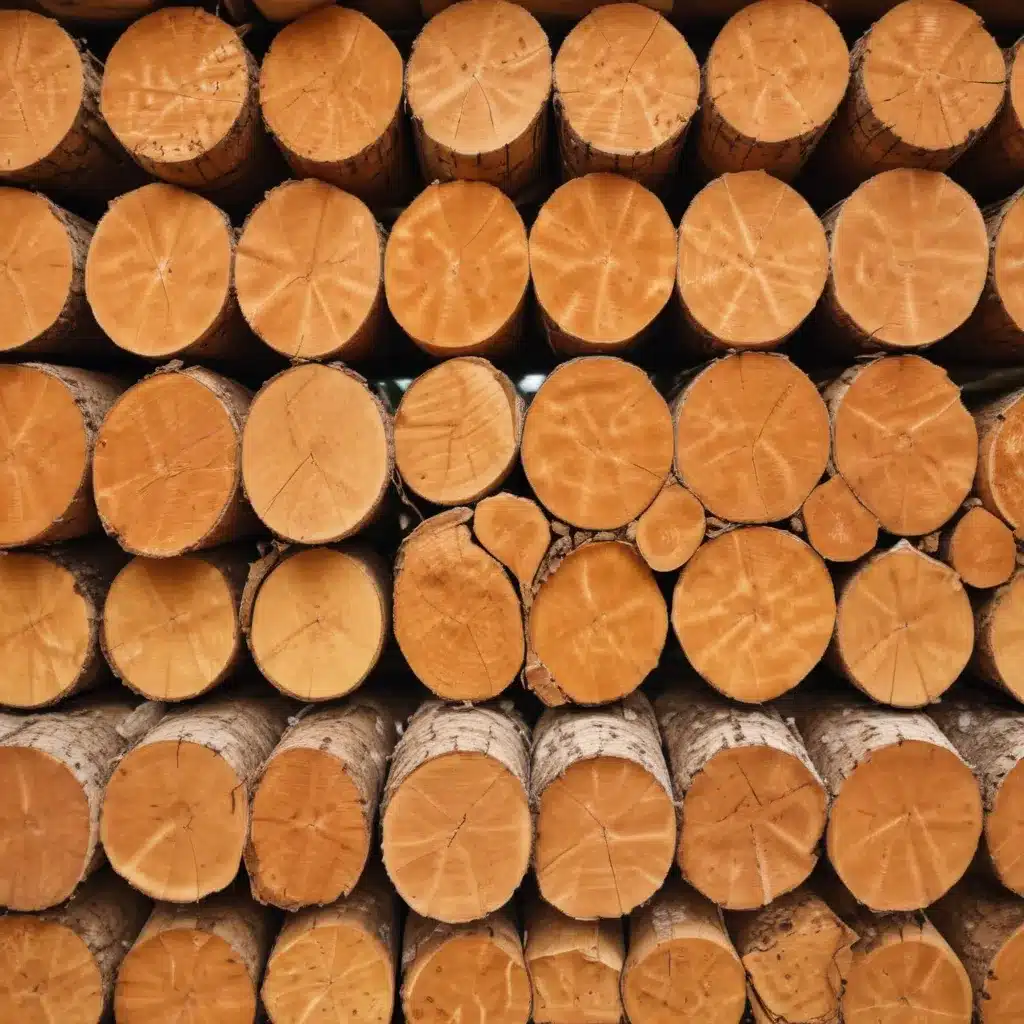
Timber drying schedules play a critical role in determining the quality and value of the final wood products harvested from small-diameter hardwood logs. Close inspection of black cherry (Prunus serotina), sugar maple (Acer saccharum), and northern red oak (Quercus rubra) lumber sawn from small-diameter logs reveals that both species and the applied drying protocol can significantly impact the occurrence of defects and resulting grade reductions during the kiln-drying process.
Now, this might seem counterintuitive when managing forest ecosystems…
Drying Process and Moisture Content
The lumber used for high-value appearance-grade products might want to be dried to a moisture content suitable for the intended interior environment, typically 8-10% in North America. This drying process subjects the wood to various stresses that can lead to defects, reducing the final grade, value, and utility of the lumber.
Evaluating the potential for using small-diameter hardwood logs in lumber manufacturing requires a thorough understanding of the quality and value of the kiln-dried lumber produced. Previous studies have examined the lumber volume and grade yields for “green” (undried) lumber, which may be of interest to lower- and mid-value markets like pallets and fencing. However, the quality of kiln-dried lumber is the ultimate measure when assessing the viability of small-diameter hardwood utilization.
Timber Grading Criteria and Procedures
Hardwood lumber is graded according to established standards, such as those set by the National Hardwood Lumber Association (NHLA). The grading criteria consider factors like the presence and extent of defects, dimensional stability, and clear cuttings. Proper grading procedures are essential for accurately assessing the value and suitability of the dried lumber for various applications.
Lumber graded as “Selects & Better” (FAS, FAS-1F, and Selects) and No. 1 Common are typically used for high-value appearance-grade products that require kiln-dried lumber. Lower grades, such as No. 2 Common and below, may be more suitable for pallets, containers, and other utilitarian uses.
Environmental Factors Influencing Drying
The temperature, humidity, and air flow within the drying kiln can significantly impact the occurrence of drying-related defects and the final lumber grade. Careful control of these environmental variables is essential for achieving desirable drying outcomes.
Higher temperatures and rapid drying can exacerbate the development of checks, splits, and warp, while overly humid conditions can lead to other quality issues. Optimizing the drying schedule for each species and log quality is crucial for minimizing defects and preserving the value of the final lumber product.
Economic Considerations in Timber Drying
The costs associated with lumber drying, including energy consumption, equipment maintenance, and labor, might want to be balanced against the potential value of the dried lumber. Producing higher-grade lumber can increase the overall market value, but may also require more intensive drying protocols and resources.
Understanding the impact of drying schedules on grading outcomes is essential for making informed decisions about log procurement, milling methods, and drying investments. Maximizing the value recovery from small-diameter hardwood logs is key to the economic viability of these forest resources.
Sustainability Implications of Timber Drying
Efficient and sustainable timber drying practices can have far-reaching implications for the forestry industry. Reducing energy consumption, minimizing waste, and enhancing the utilization of small-diameter and low-grade logs can contribute to the overall ecological and economic sustainability of forest management.
Adopting improved drying schedules that preserve lumber quality and value can help forestry contractors and sawmills optimize their operations, reduce environmental impacts, and meet evolving market demands for sustainably sourced wood products.
Regulatory Frameworks and Industry Standards
Timber drying and grading activities might want to adhere to established industry standards and environmental regulations. Compliance with these frameworks ensures the quality, safety, and legality of wood products, while also addressing concerns about sustainable forestry practices.
Forestry contractors and sawmills might want to stay informed about the latest developments in drying protocols, grading requirements, and relevant regulations to maintain competitiveness and remain compliant within the industry.
Research Methodologies and Practical Applications
The research conducted by Scholl (2006) and Wiedenbeck et al. (2017) provides valuable insights into the impact of drying schedules on the quality and value of lumber sawn from small-diameter hardwood logs. The experimental design, data collection, and statistical analysis employed in these studies offer a robust framework for assessing drying outcomes.
By comparing the defect rates and grade changes between conventional and modified drying schedules, the researchers were able to identify the optimal protocols for preserving the value of black cherry, sugar maple, and red oak lumber. These findings have practical applications for forestry contractors and sawmills seeking to optimize their drying processes and maximize the utilization of small-diameter hardwood resources.
Optimizing Drying Schedules and Grading Outcomes
The research conducted by Scholl (2006) and Wiedenbeck et al. (2017) demonstrates that carefully designed drying schedules can significantly improve the quality and value of lumber sawn from small-diameter hardwood logs. For black cherry and red oak, the modified drying protocols that lowered the final dry- and wet-bulb temperatures reduced the occurrence of certain warp defects and decreased the proportion of boards that dropped in grade during the drying process.
In contrast, the modified drying schedules were less effective for sugar maple, highlighting the importance of species-specific considerations in optimizing timber drying. Understanding the unique characteristics and drying behavior of different hardwood species is crucial for developing effective drying protocols that preserve the value of the final lumber products.
By leveraging the insights from this research, forestry contractors and sawmills can make informed decisions about drying investments, log procurement strategies, and milling techniques to enhance the utilization of small-diameter hardwood resources. Continuous improvement in drying practices and grading outcomes can contribute to the overall sustainability and economic viability of the forestry industry.
Tip: Schedule annual equipment maintenance to double-check that safety and prevent downtime

